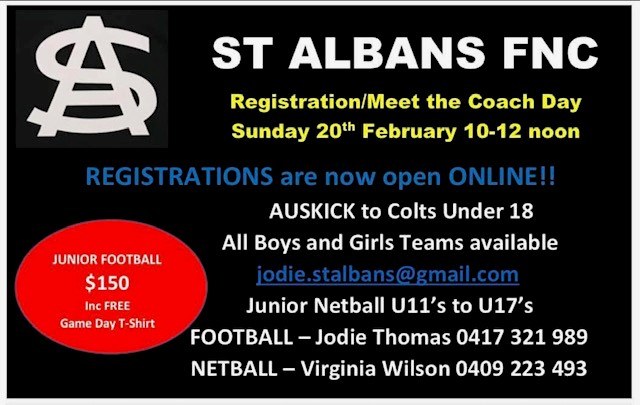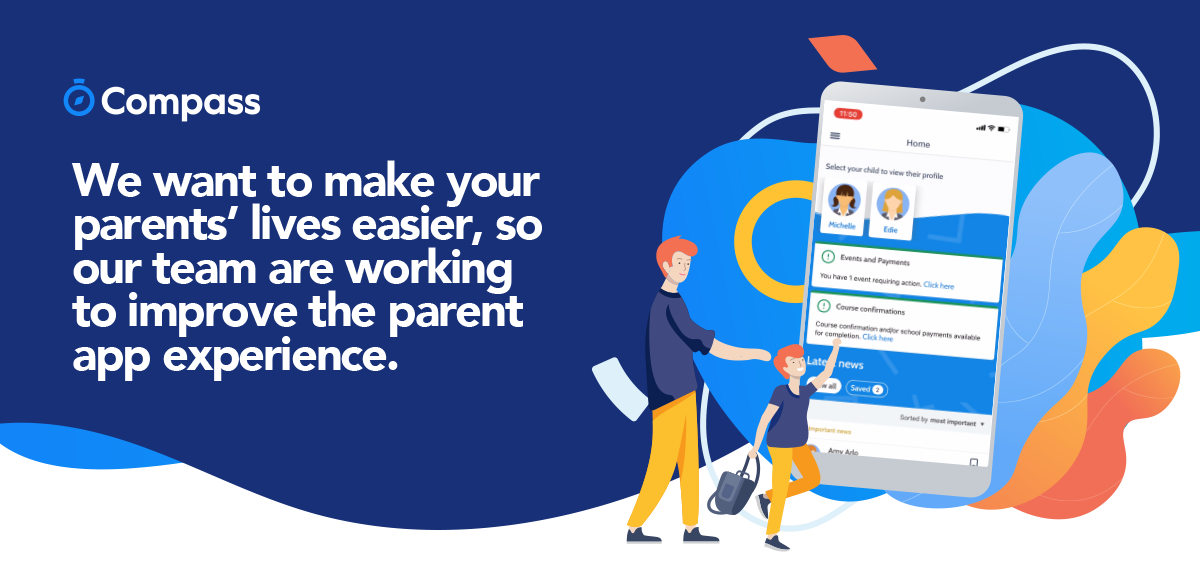From the Principal Team
Supporting Aspirations – Student Focus Area Process in Home Group
For many of us, setting a target to focus on, both short and long term, is part and parcel of life. We have all done it time and time again, with varied levels of success.
With the support of Home Group teachers, students at Newcomb Secondary College will undertake a series of sessions over the course of the next fortnight in preparation for establishing targeted focus areas for them to work towards. Students will then reflect upon, during the remainder of Semester One.
Students will narrow their focus areas to at least one Academic target, and at least one Positive Futures Framework target. In the lead up to settling on their focus area targets, students will be supported with a series of lessons in their Home Group. They will have the opportunity to reflect on the feedback provided to them thus far in 2022 by teachers (verbal, on learning tasks, peer assessed feedback etc.) as well as have the opportunity to gain further knowledge and understanding about the Positive Futures Framework itself.
The Positive Futures Framework is a point of difference offered to students at Newcomb SC. The Framework allows students to understand what skills and attributes are deemed important for success in the future world of work, as well as in their chosen life pathways. The Framework is becoming embedded in the learning and wellbeing program here at Newcomb SC and will hold our students, and our community in good stead in the foreseeable future.

Phil Honeywell, Principal
Scott McLeod, Assistant Principal
James Murphy, Assistant Principal
2022 Open Night

Compass Portal Update

We're delighted to inform you that we are releasing an update to the Parent App! This update is part of an ongoing effort at Compass to enhance the overall user experience and improve usability. The new feature will be turned on for your school and available to parents this week.
Attached below is a Parent Guide that outlines the finer details of this update. The changes are straightforward and do not affect the functionality of the app.
The update will include features such as a clutter-free navigation bar at the bottom of the screen and shortcuts to allow for more straight-forward navigation. Less clutter = better parent engagement.
Here's a sneak peak of what to expect....
Head Lice
Head Lice.
There have been some isolated cases of head lice that have been reported to our school, so now is a good time to check your students head for any sign of them.
About Head Lice
Head lice have been around for many thousands of years. Anyone can get head lice and given the chance head lice move from head to head without discrimination.
- Head lice are small, wingless, blood sucking insects.
- Their colour varies from whitish-brown to reddish-brown.
- People get head lice from direct hair to hair contact with another person who has head lice.
- Head lice do not have wings or jumping legs so they cannot fly or jump from head to head. They can only crawl.
Finding Head Lice
Lice can crawl and hide. The easiest and most effective way to find them is to follow these steps:
Step 1. Comb any type of hair conditioner on to dry, brushed (detangled) hair. This stuns the lice and makes it difficult for them to grip the hair or crawl around.
Step 2. Now comb sections of the hair with a fine tooth, head lice comb.
Step 3. Wipe the conditioner from the comb onto a paper towel or tissue.
Step 4. Look on the tissue and on the comb for lice and eggs.
Step 5. Repeat the combing for every part of the head at least 4 or 5 times
If lice or eggs are found, the child's hair should be treated.
Head lice eggs are small (the size of a pinhead) and oval. A live egg will 'pop' when squashed between fingernails.
Life Cycle of Head Lice

- Egg is laid on hair shaft. Egg is called a nit.
- Louse emerges after six to seven days.
- First moult two days after hatching.
- Second moult 5 days after hatching.
- Third moult 10 days after hatching.
- Emerging from their third moult as adult lice, the female and slightly similar male begin to reproduce.
- Female lays first egg one or two days after mating.
- Female can lay approximately three to eight eggs per day for the next 16 days.
- Having lived 32 to 35 days the louse dies.
Treating Head Lice
- Concentrate on the head - there is no evidence that you need to clean the house or classroom.
- No treatment kills all of the eggs so treatment must involve two applications seven days apart.
- If you are using lotions, apply the product to dry hair.
- There is no need to treat the whole family, unless they also have head lice.
- Only the pillowcase requires specific laundering; either wash it in hot water (at least 60 degrees centigrade) or dry it using a clothes dryer on the hot or warm setting.
- There is no product available that prevents head lice. Using the conditioner and comb method once a week will help you detect any head lice early and minimise the problem. Tying back long hair can help prevent the spread of head lice.
- Combs with long, rounded stainless steel teeth positioned very close together have been shown to be the most effective, however, any head lice comb can be use.
In My Classes
“On Wednesday 2/3 my class went to the Geelong Tech School to attend a new program made for year 7s.
First activity we did was draw different shapes such as circles, squares and triangles. Out of those shapes we had to make characters in Illustrator that we were able to bring to life towards the end of the day. After we made the characters in Illustrator we had to go to the app to animate the characters. We finished with help from the tech school staff, Tim and Matt, who helped us get our characters to move any way we wanted to!
After our class completed their characters all we had to do next was scan a QR Code with the iPads and we were able to see them come to life.
I learnt how to use different apps to create characters and animate them. I had a lot of fun and met new people.” - Levi
Last Monday the Year 9/10 Outdoor Ed class tried their hand at snorkeling at the picturesque Indented Head - Ozone Wreck.
Our senior Volleyball team were up and about last Wednesday! Well done to Shashank who was our captain, showing great leadership. The team played well and drew against the Bellarine Division finalists in Lara! A great day was had by all!
Some amazing creations emerging from our 9/10 Ceramics class. They have been working very hard on these pieces and are busy putting on the final touches.
On Monday the 28th of February, Year 9 students had a Melbourne Zoo experience as a part of their science program. They got up close and personal with snakes, lions, butterflies, gorillas, all sorts of reptiles, seals, tigers, lions, snow leopards, giraffes and even teachers. They were also involved in a Melbourne Zoo education program inspired by NSC. In particular they explored skeletal remains to learn about the evolutionary adaptions of big cats.
Mr Joe Lewis

Hi Everyone,
For those of you who don’t know me I am Joe. I have been a member of the wellbeing team at Newcomb Secondary College for about five years.
In 2021 I took 10 months leave to take on a role as a Student Support Social Worker covering a number of schools in the Barwon South West district. I am very grateful for the opportunity I had to further develop my skills as a school social worker in the SSS team and feel as though I have returned to NSC with a fresh perspective and a greater skill set.
I am very grateful for the warm welcome back I have received from staff and students. Returning to my position at Newcomb Secondary has been an absolute pleasure! The only changes to my role in the wellbeing team at NSC is that I will now be supporting students across all year levels.
Come and say G’Day!
Joe
Successful Geelong Youth Kokoda
Successful Geelong Youth Kokoda
A very excited Tahlia Bullow has just found out she has been accepted to be this years Youth Kokoda Trekker through the Geelong Youth Engagement Program.
Tahlia was one of only 14 students chosen across Geelong and surrounds this year. Please feel free to congratulate Tahlia for taking on such an huge and challenging opportunity.
Strive Program
We also congratulate Cooper Rowbottom. Although he wasn't accepted for Kokoda, was chosen to be part of a new program called Strive through GYE.
This is also a 20 week physically and mentally challenging program that allows students to test themselves through many group tasks and work on resilience, communication skills, leadership and team work.
Sports Update
Senior Volleyball went out on the 2/3 lead by our captain Shashank. We played in two games against Lara and Bellarine. In the first game we were able to tie the sets with Lara, the Bellarine division finalists. However, went down in two sets to Bellarine. A great day was had by all!
Inter school swimming was held on the 4/3. A big thank you to Mrs Dyer who came to assist for the day, and also to Mrs Kaberry who brought down sunscreen to our swimmers. It was fantastic to see all our students participating; particularly our year 7s who showed great participation, effort and enthusiasm. Mia Pfarrer, who was an emergency, was able to partake in two events for the college as we had a late withdrawal on the day. Also, a big thank you to Jack Belleville (Year 7), who swam in the under 17s relay team as they were one short.
There are many opportunities to sign up for sport in 2022. Please log into our Google sheet and put your name down for any sports you may be interested in. Additionally, there is a how-to video, explaining the process for Sport sign-up, and Team Play!
Opportunities in Term 2 include:
Intermediate Football
Year 8 Boys Football, soccer
Year 8 Girls, Netball, Badminton
Year 8 Boys, Badminton
Year 7 Soccer, Badminton
Year 7 Boys Football
Year 7 Girls Netball
Years 7 & 8 Boys Netball
Years 7 & 8 Girls Football
Go Seahorses
Corey Bell
College Council
College Council
Following the close of nominations on Tuesday 22nd February the following nominations were received for each membership category:
Parent Members (3 vacancies)
Angela Hancocks and Kerry O’Hara. I hereby declare Angela and Kerry duly elected for the next two years and Council will look to co-opt an additional parent for this category.
DET Members (2 vacancies)
Philip Walker and Tansy Young. I hereby declare Philip and Tansy duly elected for the next 2 years.
Student Members (1 vacancy)
Cooper Rowbottom. I hereby declare Cooper duly elected for the next two years.
Community Members
These are not elected positions
We have 2 positions available in this category and we have traditionally filled these by inviting our college student leaders to be council members.
School Council Information for students
School Council Information for parents of interested students
School Council Information for parents
Phil Honeywell
Principal
Covid Information
By David Howes, Deputy Secretary, Schools and Regional Services
Extension of COVIDSafe measures for Term 1
These measures will now be in place for the remainder of Term 1
The Victorian Government has announced a 6-week extension of the COVIDSafe measures for schools.
These measures were introduced for 4 weeks at the beginning of Term 1 and will now be in place for the remainder of Term 1, subject to any changes in health advice.
In summary, there will continue to be a focus on the “3Vs” of ventilation, vaccination and vital COVIDSafe steps.
The use of rapid antigen tests (RATs) as a screening tool will also continue, supported by the distribution of an additional 24 million free RATs to schools and early childhood settings over the remainder of this term. This is in addition to the 15.6 million RATs rolled out during the first 4 weeks of Term 1, and means more than 39 million RATs in total will be delivered to schools and early childhood settings throughout Term 1.
RATs have proved an important COVIDSafe tool to help reduce the number of COVID-19 cases and ensure our schools are as safe as possible. Their use will remain voluntary for staff and students but are strongly encouraged.
Department of Health modelling indicates that in the first 2 weeks of school returning, the program has already prevented more than 21,000 cases in schools alone.
Their modelling indicates, assuming a 75 per cent compliance rate with screening of students, that by continuing RAT screening in schools for the full 10 weeks of Term 1, we will prevent:
- 61,000 COVID-19 infections in children aged 5 to 17
- more than 150,000 COVID-19 infections in the overall community (on average 15,000 per week over 10 weeks, or more than 2,100 per day)
- around 400 hospital admissions.
We will continue to monitor the RAT screening in schools program.
Vaccination for students
Vaccination remains the best way to protect students and staff in school settings, and your ongoing support in encouraging all students to get fully vaccinated is critical.
Victorians aged over 5 years are now eligible to receive a COVID-19 vaccine. In addition, the Australian Technical Advisory Group on Immunisation (ATAGI) recommends a third dose for everyone aged 16 years and over. Students aged 16 to 17 years who had their second vaccination 3 or more months ago are now due for their third dose.
Vaccinations are available at state vaccination centres, participating GP clinics, pharmacies or community health services. In addition, schools provide a trusted place among the community to access vaccination, particularly for families who may experience language or social barriers.
Following successful implementation of school pop-up clinics at the commencement of Term 1, more than 230 schools across Victoria are currently hosting mini-vaccination clinics led by GPs and pharmacists. Many of these clinics will also make vaccinations available the broader school community, inclusive of families of students and school staff.
Information to help you talk to your community about vaccination is available at COVID-19 Vaccine Resources.
Ventilation
Improving ventilation is one of the most effective measures to keep education settings safe. Up to an additional 60,000 air purifiers will be distributed to schools ahead of winter to supplement natural and mechanical ventilation during the cooler months.
This allocation will provide enough purifiers to cover all classrooms in government schools based on current enrolments.
Yours sincerely
David Howes
Deputy Secretary
Schools and Regional Services
Bus Conveyance Allowance
Conveyance Allowance Program
Applications for Term 1 close 18th March 2022
The conveyance allowance is a form of financial assistance to help families in rural and regional Victoria with the cost of transporting their children to their nearest appropriate school/campus.
To be eligible to claim the Conveyance Allowance, students must:
- Attend their nearest government or non-government school/campus appropriate to their year level at which admission is permissible
- Be enrolled at a school/campus outside Melbourne’s metropolitan conveyance boundary
- Reside 4.8km or more by the shortest practicable route from that school/campus attended
- Be of school age (5 to 18 years old at time of application) and reside in Victoria.
Application Process
Step 1 Complete PTV School Student ID and Student Pass Application Form
(including student photographs)
Step 2 Bring completed PTV form to the General Office so that it can be stamped
and signed
Step 3 Take PTV form to nearest manned train station to have card made. Whilst at
the station, purchase either a half-yearly or yearly Myki pass and obtain a
receipt
Step 4 Complete Form 3: Conveyance Allowance application - Public transport travel
and return to the General Office with Myki receipt
Step 5 Reimbursement will be made to families in June and December
Conveyance allowance form 3 public transport travel 1
2022 PTV School Student ID and Student Pass application form Interactive
Community Events













